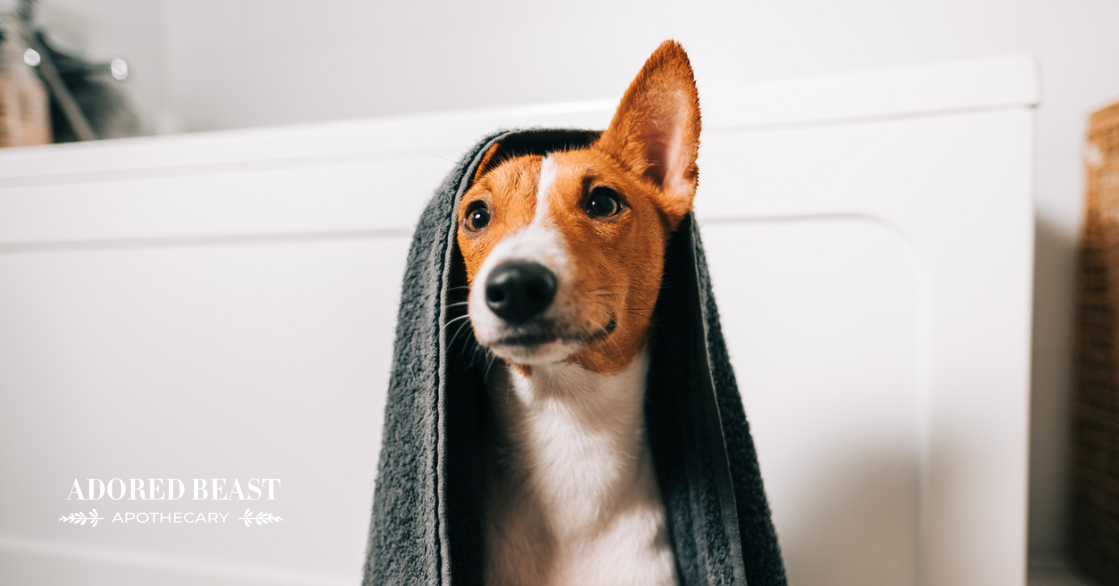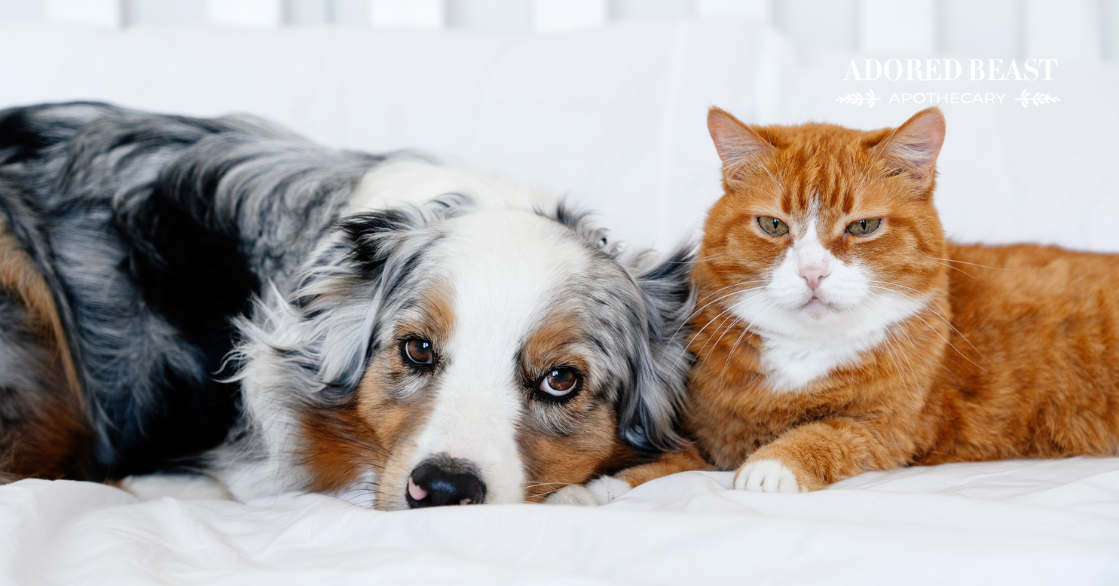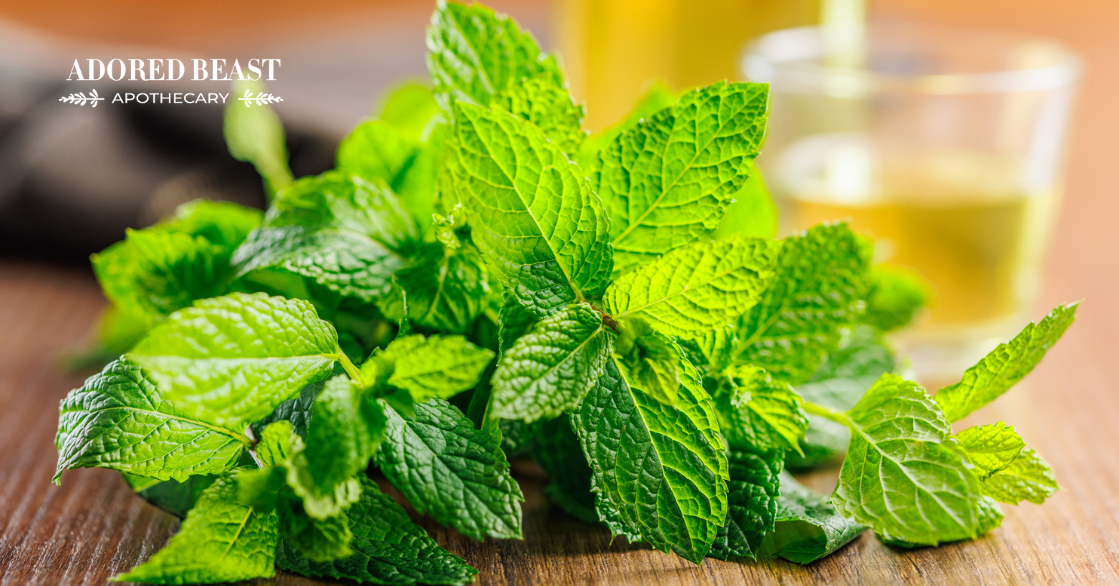This week it’s been very hot up here in Canada. Long walks are harder to come by with the heat, but our girls need exercise, so we’ve been going swimming a lot. And that means sand. When we get home, the girls get a good rinse. But not a bath…
Some people think giving their dog a bath regularly (as often as once a week) is a good idea. Some say once every 1-3 months is ideal. Still others suggest a longer wait in between.
So, how often should you bathe a dog?
The Importance of Your Dog’s Microbiome
Some people believe that more baths equal better hygiene, but the truth is, washing your dog too often could actually do more harm than good.
The skin is the largest organ in (well, on) your dog’s body. Bathing removes the necessary oils and bacteria from the skin microbiome – and these are things you WANT on the skin.
You see, these millions of friendly bacteria help defend the skin! This diverse community plays a crucial role in maintaining skin health and overall well-being. A balanced skin microbiome helps protect against pathogens, supports the skin immune system, and contributes to a healthy skin barrier.
Plus, once your dog gets out and dries off, the skin starts to dry out too. And that alone can cause irritation.
So, fewer baths is actually helpful. So again, how often should you bathe a dog?
How Often Should You Bathe a Dog?
In our house, we don’t have a calendar for bathing. Our dogs get a bath only when they really need one, such as when they roll around in something a lot less savoury than beach sand (you all know what I’m talking about!). Rinsed off, thoroughly, sure – we might do that more often. But a full lather-up? That’s rare.
So, unless your pup gets dirty or rolls in something gross, it’s best to leave the natural oils in their coat do all the hard work – they’re pretty great at self-cleaning!
That said, if your dog feels dirty – we all know that greasy feeling – you can give a good bath. Perhaps not once a week, or even once a month, but a few times a year is ok.
And in those cases, be careful with what shampoo you use. Many common ingredients in pet shampoo are not ideal, and some are downright BAD!
Here are some tips on finding a safe shampoo:
- Never use human shampoo (even if it’s natural). Shampoos are formulated for average pH levels, and humans’ and dogs’ levels differ. This means, if you use your shampoo on your dog, you could throw their skin pH way out of whack.
- Read the ingredient list, avoiding things such as:
- Methylchloroisothiazolinone (methylchloroisothiazolinone, MCI)
- Paraben Preservatives (butylparaben, methylparaben, propylparaben, benzylparaben, ethylparaben, isopropylparaben)
- Mineral Oil (mineral oil, petrolatum, paraffin liquidum, vera microcristallina, ceresine isoparaffin)
- Artificial Colours and Fragrances (artificial colours, artificial fragrances, phthalates)
- Formaldehyde Derivatives (bromopol, doazolidinyl urea, quaternium-7, -15, -31, -61, imidazolidinyl urea, DMDM hydantoin, sodium hydroxymethylglycinate)
- Sodium Lauryl Sulfate and Sodium Laureth Sulfate (sodium lauryl sulfate, SLS, sodium laureth sulfate)
- Cocamides (cocamide-MEA, cocamide-TEA, cocamide-DEA)
- Polyethylene Glycol (polyethylene glycol, PEG)
- Go for organic whenever possible. Certified organic products are rigorously tested and regulated.
- Be wary of the term “natural”. Dog shampoos are not well regulated, and many, many products use the term natural on their labels for marketing purposes. That doesn’t mean the ingredients are actually natural as you would think them to be.
Bathing: This Instead of That
So, bathing shouldn’t be frequent, for the most part. So, how can you best protect your dog’s vital skin microbiome?
This may sound off, but one of the best ways to boost the skin microbiome and improve dog skin health is to let your dog get dirty. Seriously! Dirt helps to boost your dog’s natural skin microbiome by supporting bacterial diversity. Let them roll around in the dirt (then brush them off).
Another way is to make a probiotic yogurt or kefir mask. This will help give the skin microbiome a boost. Use a ratio of 3 tablespoons of organic yogurt to 1/2 tsp of a probiotic that has at least 10 strains and 30 billion CFUs. Increase the amount of yogurt and probiotic as needed for the size of your dog. Leave it on for at least 15 minutes (30 minutes is ideal) – but only as long as it doesn’t stress your dog out. Then rinse with JUST water. This will help build up the bacterial diversity of the microbiome.
The question of how often should you bathe a dog is getting more attention recently, as we learn more about the importance of the skin microbiome. Because of the amazing defenders on the skin, we want to be more conservative in our approach to bathing, rather than just bathing once a week because it seems “cleaner.” You dog is actually pretty clean – their skin is doing the work for you. Let it!












